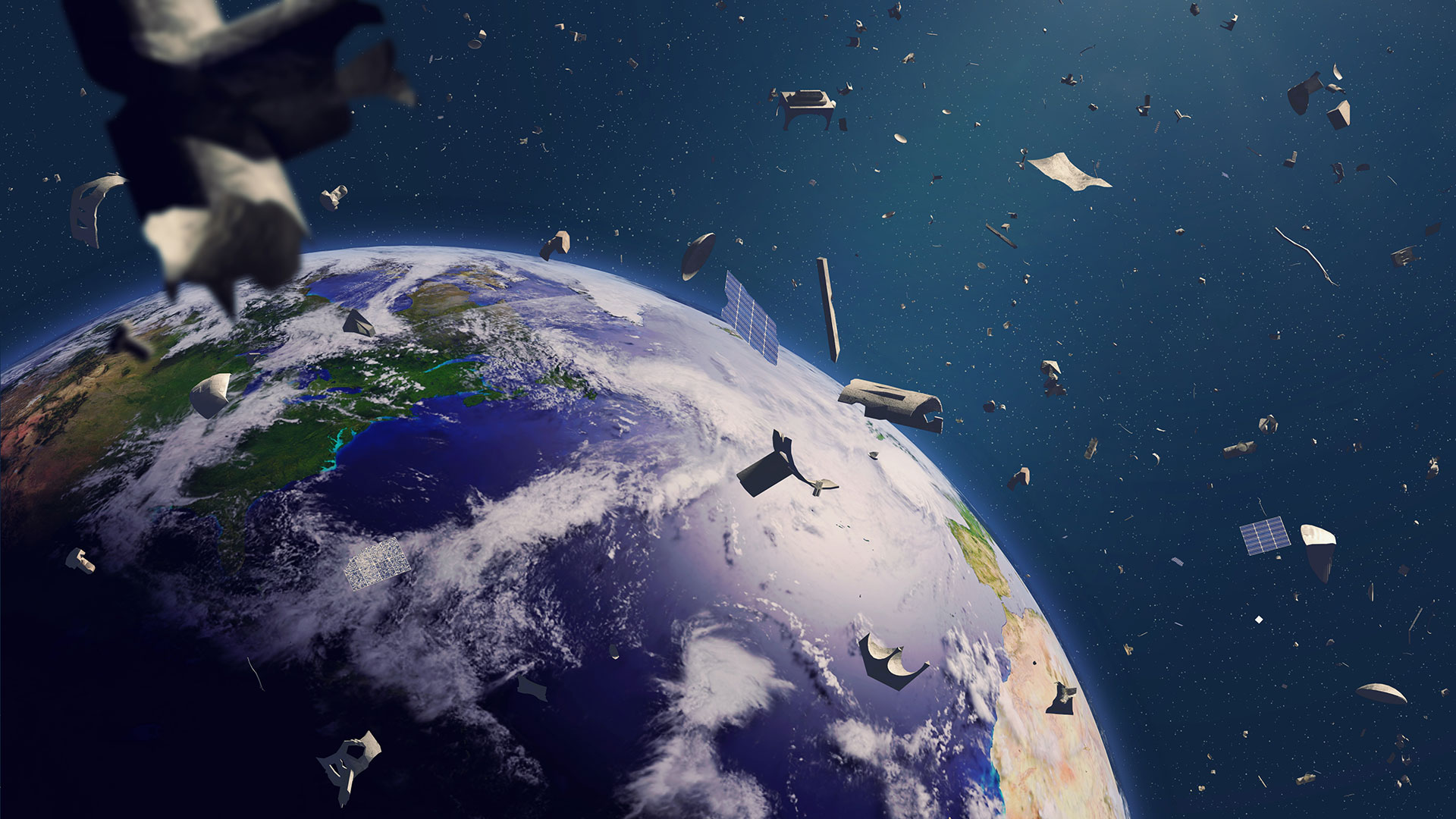The vast expanse of space, once thought to be an infinite frontier, is becoming increasingly crowded. While this growth signifies our expanding technological capabilities and insatiable curiosity about the cosmos, it also presents a new challenge: space debris.
This article delves into the world of space debris, exploring its origins, composition, impact on space activities, and potential solutions for mitigating this growing threat.
What is Space Debris?
Space debris, also known as space junk or cosmic waste, refers to man-made objects orbiting Earth that have served their purpose and no longer function. These objects can range in size from defunct satellites and rocket bodies as large as school buses down to minuscule paint chips and fragments.
Our growing presence in space has inevitably led to the accumulation of debris. The primary sources of space debris include:
- Disused Satellites: Satellites reach the end of their operational lifespan and become defunct.
- Rocket Bodies: Upper stages of rockets launched to place satellites in orbit often don't re-enter the atmosphere and become part of the debris field.
- Fragmentation Events: Collisions between existing space debris objects create a cascading effect, generating even more debris particles.
Space debris is a heterogeneous mix of materials, each posing its own threat:
- Metals: Large objects like defunct satellites and rocket bodies are primarily composed of metals like aluminum and titanium. Collisions with these objects at high orbital speeds can be catastrophic for operational spacecraft.
- Debris Clouds: Collisions and explosions in space create clouds of smaller debris particles, including paint flecks, coolant, and fragments of various materials. While individually less threatening, the sheer number of these particles significantly increases the risk of collisions with operational spacecraft.
The presence of space debris poses a significant threat to our continued space exploration and utilization:
- Collisions with Operational Spacecraft: The high orbital speeds of space debris can cause catastrophic damage to operational spacecraft, jeopardizing critical missions and scientific research.
- Disruption of Communication and Navigation Services: Collisions with debris can damage or destroy communication and navigation satellites, impacting critical infrastructure on Earth.
- Limited Access to Certain Orbits: The concentration of debris in certain orbits, particularly Low Earth Orbit (LEO), may restrict future access to these areas for vital space activities.
A particularly worrying scenario is the Kessler Syndrome. This theoretical situation posits that a critical density of debris in orbit could trigger a chain reaction of collisions. Each collision would create even more debris, exponentially increasing the risk of further collisions and potentially rendering certain orbits unusable.
The international space community recognizes the growing threat of space debris and is actively exploring solutions:
- Debris Mitigation Guidelines: Organizations like the Inter-Agency Space Debris Coordination Committee (IADC) have established guidelines for minimizing debris generation during space missions. These guidelines include practices like passivation of defunct satellites and controlled re-entry of rocket bodies.
- Active Debris Removal (ADR): Several concepts for actively removing debris from orbit are under development. These include robotic capture mechanisms, harpoons, and even lasers.
- Space Traffic Management: As space traffic continues to grow, implementing space traffic management systems will be crucial to avoid collisions and minimize debris generation.
Addressing the space debris challenge requires a collaborative effort from spacefaring nations and private companies. By implementing mitigation strategies, actively removing debris, and fostering international cooperation, we can ensure a sustainable future for space exploration and utilization.
Tags:
Cosmology

